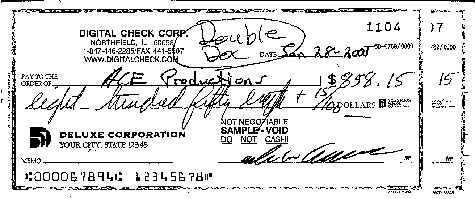 A double-feed, sometimes informally called a piggyback, occurs in check scanning when more than one check at a time is pulled into the paper path. The result is that one check is partially or totally covered up by the document overlapping it during the scan process.
A double-feed, sometimes informally called a piggyback, occurs in check scanning when more than one check at a time is pulled into the paper path. The result is that one check is partially or totally covered up by the document overlapping it during the scan process.
Double-feeds can cause serious problems if they make it through undetected. If one check is completely overlapped by another, it can “disappear” from the clearing process — not appearing among the scanned images despite physically passing through the scanner, and consequently not being sent out for settlement. These errors can go undiscovered until a customer notices funds missing, and can require expensive and time-consuming searches through the original paper documents.
All modern check scanners include measures to prevent double-feeds. A discriminator roller, or simply discriminator, in the feed mechanism ensures that only one item at a time is separated from the stack of checks being scanned. Many scanners also have active double-feed detection that uses a sensor to measure the thickness of paper being passed through, and triggers an error or a stop if it appears more than one item is in the track. Some banks and businesses also employ control totals on each deposit to make sure every item is accounted for. Because of these and other countermeasures, double-feeds are a serious, but thankfully rare, problem.





